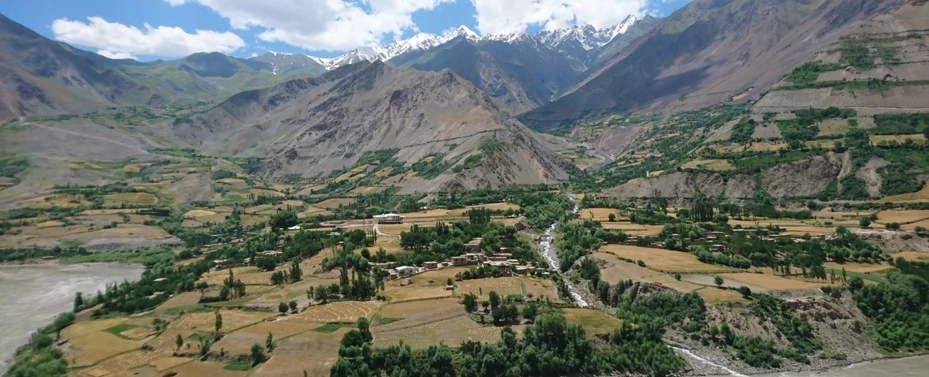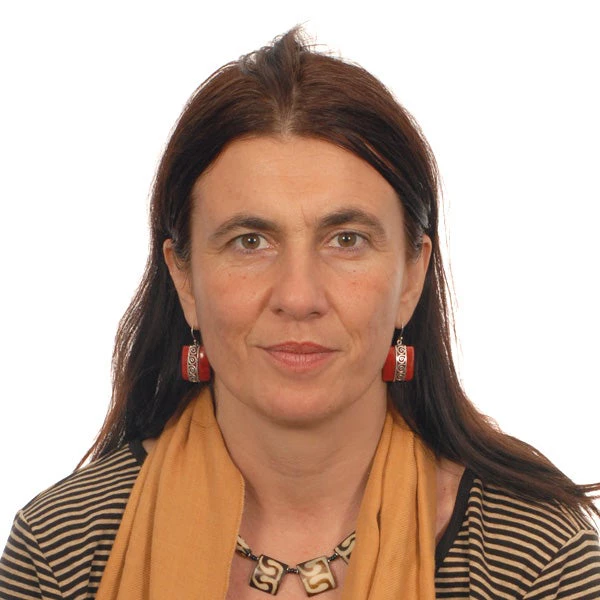 Pamir Valley, Tajikistan. Photo Credit: Brenden Jongman
Pamir Valley, Tajikistan. Photo Credit: Brenden Jongman
Drylands in Central Asia are among the most rapidly degrading and climate-vulnerable areas worldwide. Desertification caused by climate change and human activities has led to land degradation, soil erosion, and loss of vegetation and biodiversity that is costing Central Asia over 5% of regional GDP.
In marking UN Day to Combat Desertification and Droughts this week, Central Asian countries are convening in Tashkent to discuss how the power of nature and nature-based solutions (NBS) can be harnessed to restore landscapes, improve water security, and enhance climate resilience of the region's people, ecosystems, and infrastructure.
NBS refers to adaptive actions that aim to protect, manage, and restore natural or modified systems, including coastlines, cities, watersheds, and rivers while simultaneously providing human well-being and biodiversity benefits. Such solutions can help shield cities from sand and dust storms, reduce pollution, improve watersheds, expand arable land, and enhance agriculture productivity.
By leveraging the power of nature, NBS offer a promising, cost-effective approach that would help strengthen climate resilience and promote social and economic prosperity. In many instances, NBS are implemented as hybrid interventions, which synergistically integrate green infrastructure (nature-based elements such as forests, wetlands, and green spaces) and gray infrastructure (conventional built structures like dams, levees, and pipelines), to help achieve development goals, particularly climate mitigation. In fact, research shows that NBS could provide around 37% of the cost-effective climate mitigation that is needed by 2030 to achieve the goals of the Paris Agreement.
Embracing a Future with Nature-Based Solutions
Degraded landscapes across Central Asia require a comprehensive approach that incorporates nature, environmental engineering, community engagement, job creation, and effective policies. NBS offer such a strategy.
The governments of Central Asia have recognized the need to transition to a green economy and have made considerable commitments towards this goal. By embracing a greener growth model, the region can build resilience, protect livelihoods, strengthen gender and social inclusion and mitigate the impact of resource depletion and climate change, particularly among rural communities.
As a reliable partner, the World Bank is supporting Central Asian countries to achieve green growth and to implement environmental conservation and sustainable management of landscapes, water resources, and disaster risks. The institution can also share best practices and lessons learned elsewhere—NBS have proven successful around the world, such as Brazil, Somalia, and Vietnam. A new generation of projects centered around NBS is emerging in Central Asia as part of this support helping countries achieve their development goals and creating green jobs.
Success Stories and Implementation in Central Asia
As part of the World Bank's flagship RESILAND CA+ Regional Landscape Restoration Program across Central Asia, NBS are deployed to restore degraded lands, enhance resilience, and foster collaboration among these countries for transboundary landscape restoration.
Kazakhstan: In Kazakhstan, RESILAND projects plant trees to increase the productivity of pastureland and to restore ecosystems services and land productivity. in Uzbekistan's fragile transboundary areas.
Kyrgyz Republic: Efforts here aim to use a combination of green and gray solutions to reduce flooding and impacts from mudflows.
Turkmenistan: A study in Turkmenistan will be carried out to analyze opportunities for landscape restoration by identifying the best NBS to combat desertification.*
Tajikistan: A study in the Vakhsh River Basin identifies effective landscape restoration interventions, combining advanced modeling and ecosystem service valuation to demonstrate the financial benefits of supporting green infrastructure, crucial for a country where hydroelectric facilities generate 90% of the country's electricity.
Uzbekistan: A recent study finds that landscape restoration based on NBS can reduce air pollution generated by sand and dust storms originating from the dry Aral Seabed and can improve health and livelihoods, with annual benefits of $28-44 million. It can also aid climate change mitigation by preventing carbon release and absorbing CO2. Measures to mitigate sand and dust storms through afforestation of exposed dry seabed are already underway with over 1.6 million hectares planted with drought-resistant trees and vegetation.
By adopting an integrated approach to sustainable land management through NBS, the RESILAND CA+ program addresses common challenges and promotes sustainable practices across multiple land uses, combating land degradation and desertification.
A Way Forward
For Central Asia, 21st century challenges require bold solutions and innovative tools. Integrating NBS into development strategies, where natural systems coexist alongside gray infrastructure, offers tremendous potential for promoting sustainable development.
In addition to addressing desertification and enhancing climate resilience, NBS also provide multiple co-benefits, like improved water security, enhanced biodiversity, and stronger community livelihoods. Yet, to be successful, NBS will require effective policies and public and private investments to scale up action. With targeted policies and by harnessing the inherent power of nature, the region can forge a path towards a sustainable future that safeguards the well-being of both ecosystems and communities.
*This blog was updated post-publication to reflect that the land restoration study in Turkmenistan has yet to be carried out.




Join the Conversation